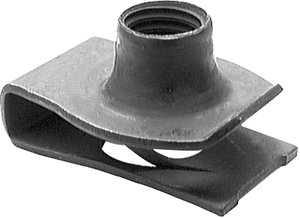LarryLeveen
Member
I moved into a house with a great detached workshop, except that several AC receptacles don't work:
- one outside GFCI receptacle does not work, and neither the test nor reset buttons appear to function even when pressed firmly
- four (of the eight) inside receptacles along two adjacent walls do not work -- the other four, along the other two adjacent walls work
- an analog multimeter shows good voltage (120v) for the working outlets, no voltage in most of the non-working outlets, and ~4.0 volts in the farthest bad outlet. It had only two wires (plus ground) connecting to it, and not four, which I thought meant that it is the last in a series for that circuit.
Other details:
- at the electrical service panel in the house, there two breakers serve the shop -- they are joined together with a bridge so that they actuate together and each is labeled "50"
- are three switches on the inside of the workshop near the door -- two next to each other control the overhead fluorescent light fixtures and work fine -- but it is not apparent what the third switch, which is separate, does (or is supposed to do). It is located near, but on the opposite side of the wall from the GFCI I mentioned above
I turned off the power at the panel by flipping the double breakers, verified that there was no voltage on all outlets, and then opened up the bad ones to look for loose wires. The one with a low voltage had a loose black wire mounted at the stab-in connector (there were no silver/brass screw terminals). I pulled it out, trimmed it down a bit and remounted it. The other bad outlets had no apparent wiring problems (but I might have missed something since I am out of my element). I also pulled out the lone switch and noticed that the insulation on the white wire was a little cracked. I trimmed it down to eliminate that bad section and remounted the wire on the switch.
Aside, I realize now that I did NOT check the wiring in the last _working_ outlet -- which is next to the non-working outlet with the low voltage.
I need help in troubleshooting the non-working outlets. Seems like it could be that:
- the GFCI receptacle is bad and is preventing the receptacles that follow it in series from working.
- the GFCI alone is switched
- the bad indoor receptacles are switched
Thoughts? Recommendations? I think tomorrow I'm gonna pick up an outlet tester to help me determine if things are wired correctly or not as I can use that help (being less experienced).
- one outside GFCI receptacle does not work, and neither the test nor reset buttons appear to function even when pressed firmly
- four (of the eight) inside receptacles along two adjacent walls do not work -- the other four, along the other two adjacent walls work
- an analog multimeter shows good voltage (120v) for the working outlets, no voltage in most of the non-working outlets, and ~4.0 volts in the farthest bad outlet. It had only two wires (plus ground) connecting to it, and not four, which I thought meant that it is the last in a series for that circuit.
Other details:
- at the electrical service panel in the house, there two breakers serve the shop -- they are joined together with a bridge so that they actuate together and each is labeled "50"
- are three switches on the inside of the workshop near the door -- two next to each other control the overhead fluorescent light fixtures and work fine -- but it is not apparent what the third switch, which is separate, does (or is supposed to do). It is located near, but on the opposite side of the wall from the GFCI I mentioned above
I turned off the power at the panel by flipping the double breakers, verified that there was no voltage on all outlets, and then opened up the bad ones to look for loose wires. The one with a low voltage had a loose black wire mounted at the stab-in connector (there were no silver/brass screw terminals). I pulled it out, trimmed it down a bit and remounted it. The other bad outlets had no apparent wiring problems (but I might have missed something since I am out of my element). I also pulled out the lone switch and noticed that the insulation on the white wire was a little cracked. I trimmed it down to eliminate that bad section and remounted the wire on the switch.
Aside, I realize now that I did NOT check the wiring in the last _working_ outlet -- which is next to the non-working outlet with the low voltage.
I need help in troubleshooting the non-working outlets. Seems like it could be that:
- the GFCI receptacle is bad and is preventing the receptacles that follow it in series from working.
- the GFCI alone is switched
- the bad indoor receptacles are switched
Thoughts? Recommendations? I think tomorrow I'm gonna pick up an outlet tester to help me determine if things are wired correctly or not as I can use that help (being less experienced).

